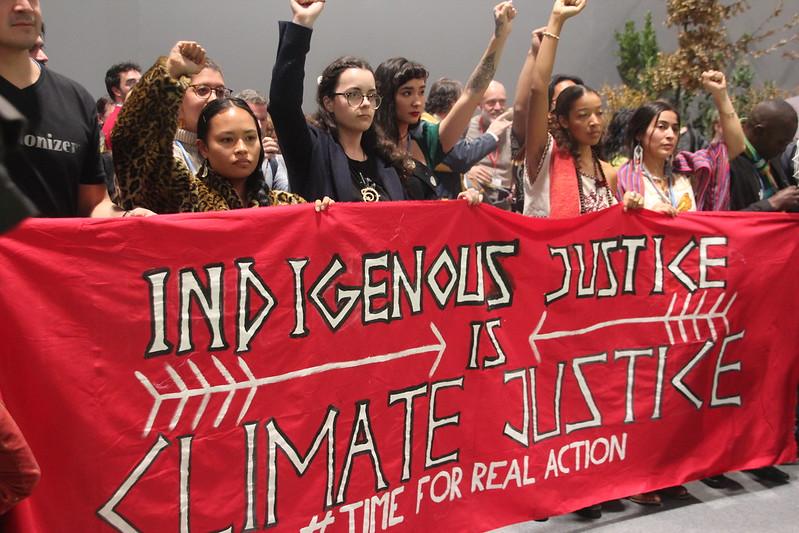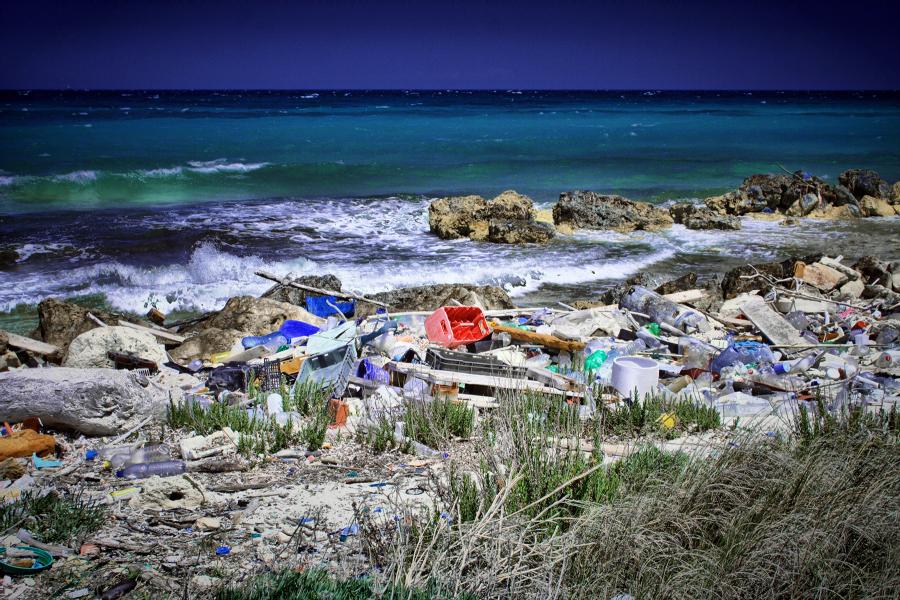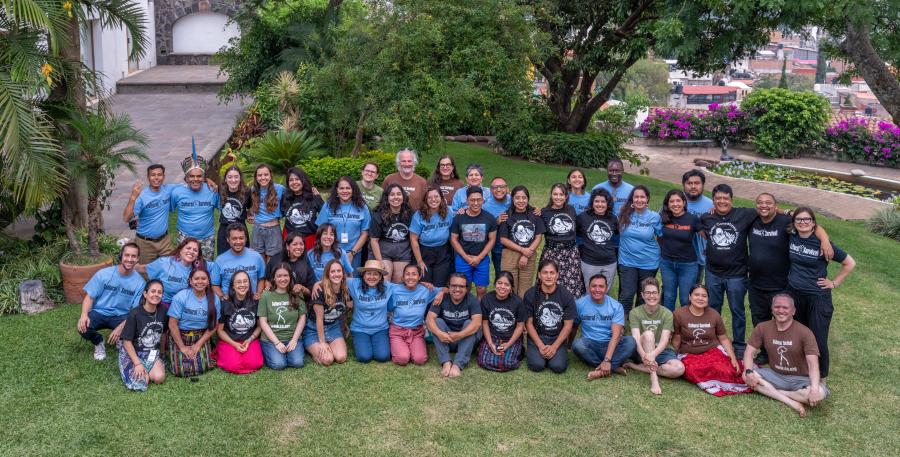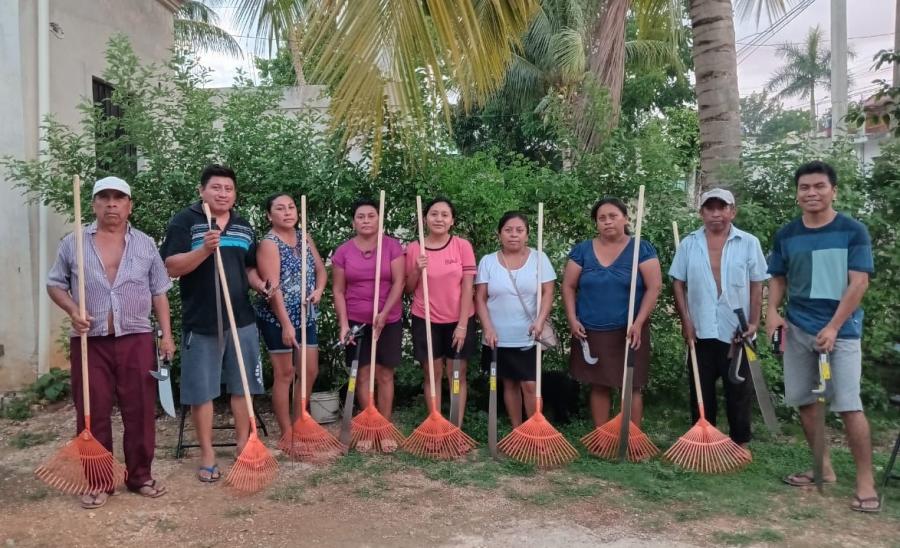
By Laura Simpson Reeves
Despite the growing urgency of the climate crisis, and Indigenous and climate activist voices calling for change, little was achieved at last month’s UN Climate Change Conference in Spain. Originally to be held in Chile, the United Nations Framework Convention on Climate Change 25th Conference of the Parties (UNFCCC COP25) ran for the first two weeks of December 2019. The annual conference brings together representatives from all 197 states that are parties to the UNFCCC, with a recent focus on the implementation of the Paris Agreement, a pact to limit global temperature rise to 2 degrees Celsius made at 2015’s COP and currently ratified by 187 of the states. The COPs are also attended by non-state delegates, including representatives from Indigneous organizations and other non-governmental organizations.
“At COP25, we felt the immense power of our global social movements working toward just climate solutions,” said Osprey Orielle Lake, Executive Director of the Women's Earth and Climate Action Network (WECAN). “While governments failed to take ambitious action again this year, peoples movements rose-up, heeding the call for action by advocating for community-led solutions, forest protections, keeping fossil fuels in the ground.”
“There [were] actions all week from Indigenous groups from the Arctic to the Amazon, and COP25 has been an incredibly hostile location for those actions. They have not been listening to us,” Indigenous Climate Action’s Ta’Kaiya Blaney (TIa’Amin Nation) said. “Yet, as Indigenous people we’re still here because we’re doing it for the children, we’re doing it for our future generations, and the future generations of the planet.”
December 6 saw more than 500,000 people take to the streets, led by Indigenous Peoples. “As Indigneous youth we are on the frontlines of climate change, and we are also on the front lines of fighting it,” Blaney said during the march. “Indigenous rights are imperative to climate justice.”

Photo courtesy of Friends of the Earth International.
In an unprecedented move, activists were forcibly removed from the building on December 11 following a protest, with their access to the event reportedly revoked. “There was an action were Indigenous women were kicked, they were escorted outside by security, they were prevented from reuniting with their children inside. This is the sort of criminalization that Indigenous communities on the front lines of fossil fuel developments see every day, without visibility, and without the witnesses that there were at that action.”

Photo by John Englart.
A number of civil society organizations, including the Indigenous Environment Network, released a joint statement condemning the action. “Hundreds of us demonstrated inside the halls of COP25 today in Madrid — not to block progress, but to drive it forward,” the statement said. “Instead of listening to our voices, they attempted to silence us. We were pushed, bullied, and touched without our consent. We were driven out of the negotiating halls, told that we can take our action outside as they raised an enormous metal door and herded us out. We weren’t advised to the intentions of the UN security to take our badges. We stood out in the cold, many without our jackets and coats as we later watched the enormous metal door lock us out in the cold.”
Negotiations went until the afternoon of December 15, two days after the meeting was scheduled to conclude, making it the longest COP in history. However, the parties were unable to reach a consensus, with most decisions being pushed into the latter half of 2020. While some issues may be resolved at June’s intersessional session in Bonn, most will need to wait until the next COP meeting in Glasgow in November 2020. However, this was deemed preferable by delegates than a deal that threatened Indigenous rights.
Negotiators were unable to agree on Article 6 at COP25, and many belive that no deal is better than a deal that enables counterproductive carbon markets and does not respect, protect, and fulfill Indigenous, human, gender, environmental rights. “We must say no to false solutions and move toward real climate solutions that call for justice, accountability, and a clean and healthy future for all," Orielle Lake stated.
While the issues around Article 6 were not resolved this year, there were two small wins for Indigenous Peoples. Firstly, the work plan for the Local Communities and Indigenous Peoples Platform (LCIPP) was adopted. The LCIPP was established in 2015 to facilitate the exchange of information and experiences and enhance the engagement of Indigenous Peoples and local communities in the UNFCCC process. The work plan will detail how the functions of the LCIPP will be implemented over the next two years. Secondly, a new five-year Gender Action Plan (GAP) was adopted. According to the Women and Gender Constituency, one of nine stakeholder groups of the UNFCCC, “This GAP takes into account human rights, ensuring a just transition, and the challenges Indigeneous Peoples face while fighting for climate justice and protecting their communities.”
Indigenous knowledges and practices, however, need to be front and center of future discussions. “We [Indigenous Peoples] are the experts on climate. We are the kaitiaki, the stewards of nature. We know the legitimacy of our voices, and it is about time that you recognized it too,” said New Zealand climate activist Kera Sherwood-O’Regan (Māori), during the closing remarks she delivered on behalf of Indigenous delegates. “Stop taking up space with your false solutions, and get out of our way.”
“Indigenous delegates will continue to push for the protection of our lands and our waters and our soils and our mountains and our rivers, on frontlines, within our communities. COP25 is one outlet in which we can try to amplify our voices, but that work is constant.” said Ta’Kaiya Blaney. “We do it all because we are not defending nature, we are nature defending itself.”
Top photo by John Englart.



